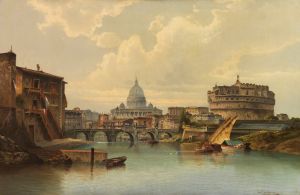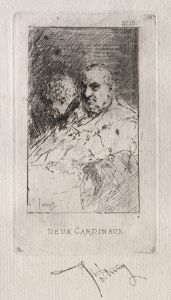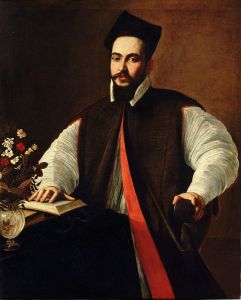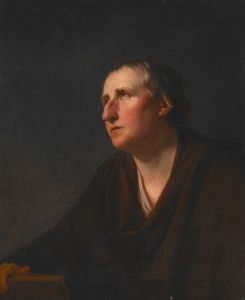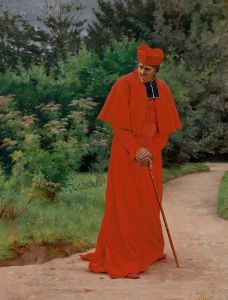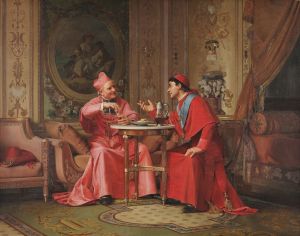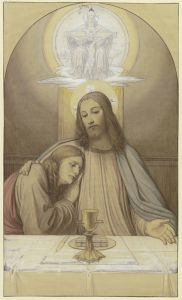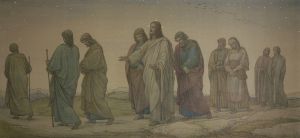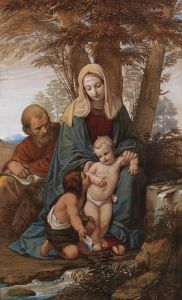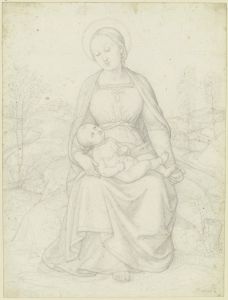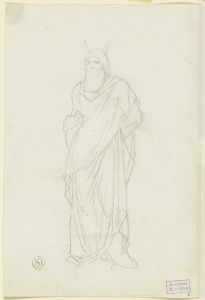
Ein Cardinal Penitenziario maggiore, in der heiligen Woche zu St. Peter in Rom
A hand-painted replica of Eduard von Steinle’s masterpiece Ein Cardinal Penitenziario maggiore, in der heiligen Woche zu St. Peter in Rom, meticulously crafted by professional artists to capture the true essence of the original. Each piece is created with museum-quality canvas and rare mineral pigments, carefully painted by experienced artists with delicate brushstrokes and rich, layered colors to perfectly recreate the texture of the original artwork. Unlike machine-printed reproductions, this hand-painted version brings the painting to life, infused with the artist’s emotions and skill in every stroke. Whether for personal collection or home decoration, it instantly elevates the artistic atmosphere of any space.
Eduard von Steinle was a notable German painter of the 19th century, recognized for his contributions to the Nazarene movement, which sought to revive honesty and spirituality in Christian art. One of his works, "Ein Cardinal Penitenziario maggiore, in der heiligen Woche zu St. Peter in Rom," reflects his deep engagement with religious themes and his commitment to depicting scenes of ecclesiastical significance.
The title of the painting translates to "A Major Penitentiary Cardinal, in the Holy Week at St. Peter's in Rome." This suggests that the artwork captures a moment during the Holy Week, a significant period in the Christian liturgical calendar, observed in the week leading up to Easter Sunday. The setting, St. Peter's Basilica in Rome, is one of the most important sites in Catholicism, serving as the papal enclave and a central place of worship and pilgrimage.
Steinle's painting likely portrays a cardinal who holds the position of Major Penitentiary, a senior official in the Apostolic Penitentiary, which is a tribunal of the Roman Curia responsible for issues relating to the forgiveness of sins, indulgences, and other matters of conscience. The Major Penitentiary is a cardinal appointed by the Pope, and during the Holy Week, he would be involved in various liturgical ceremonies and penitential services.
The artwork is expected to reflect Steinle's characteristic style, which combines detailed realism with a strong spiritual and emotional undercurrent. His works often feature rich colors, careful attention to detail, and a focus on the expressions and gestures of the figures, aiming to convey the solemnity and sacredness of the religious events depicted.
Steinle was part of the Nazarene movement, which was founded in the early 19th century by a group of young German artists who sought to return to the purity and spirituality of medieval and early Renaissance art. They rejected the academic art of their time, which they viewed as overly secular and superficial. Instead, they embraced a style that emphasized religious themes, clear outlines, and bright colors, drawing inspiration from artists like Raphael and Fra Angelico.
While specific details about the painting "Ein Cardinal Penitenziario maggiore, in der heiligen Woche zu St. Peter in Rom" are limited, it can be inferred that Steinle's work would embody these principles, aiming to inspire devotion and reflection in the viewer. His paintings often served as visual sermons, intended to educate and uplift the faithful by illustrating key moments of Christian doctrine and history.
Eduard von Steinle's contributions to religious art were significant during his lifetime, and his works continue to be appreciated for their spiritual depth and artistic skill. Although not as widely known today as some of his contemporaries, Steinle's paintings remain important examples of 19th-century religious art, reflecting the values and aspirations of the Nazarene movement.





